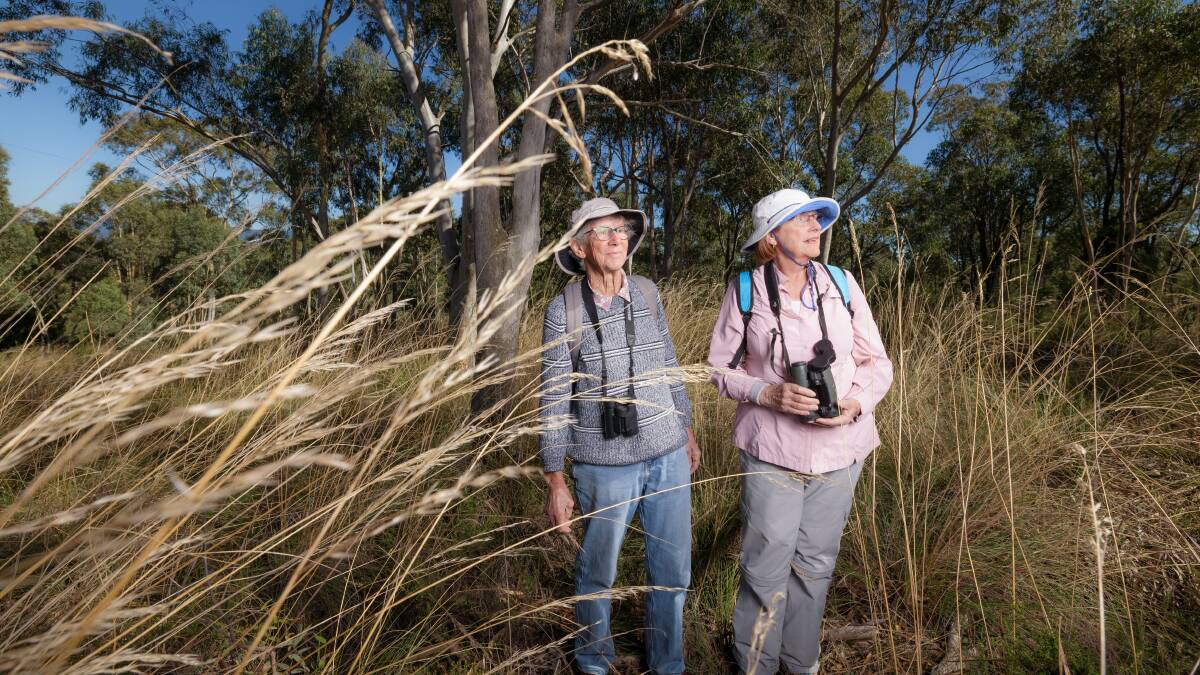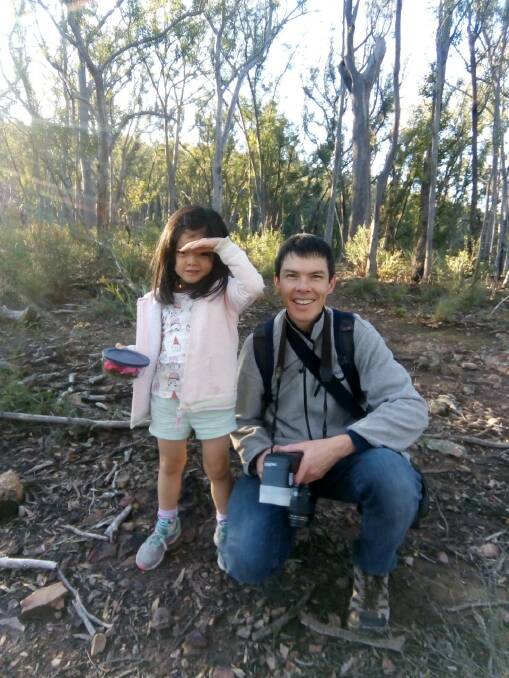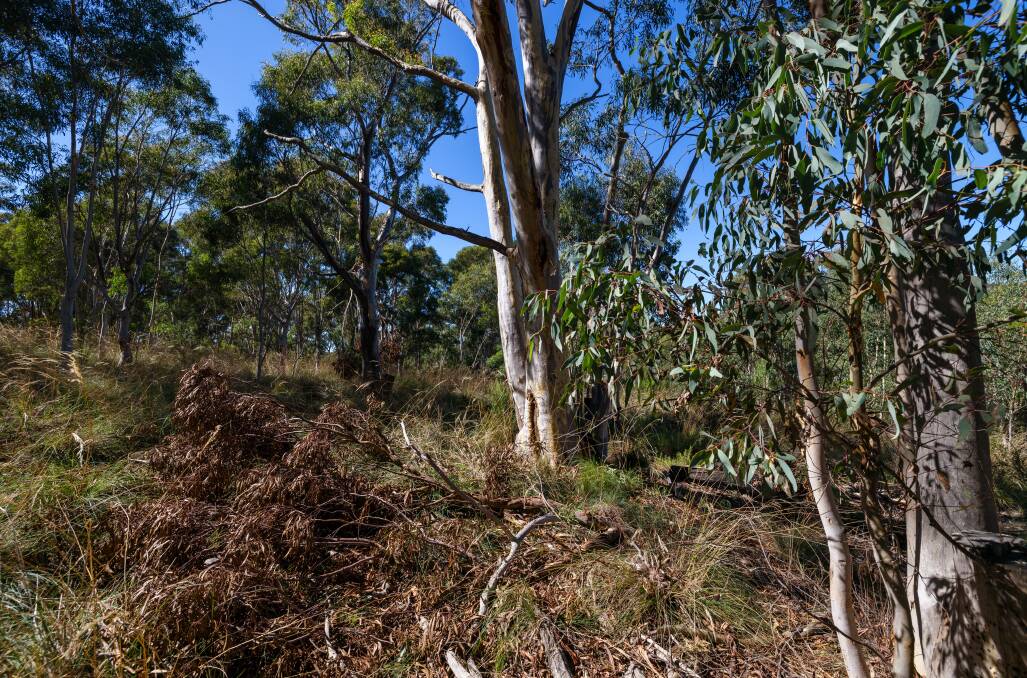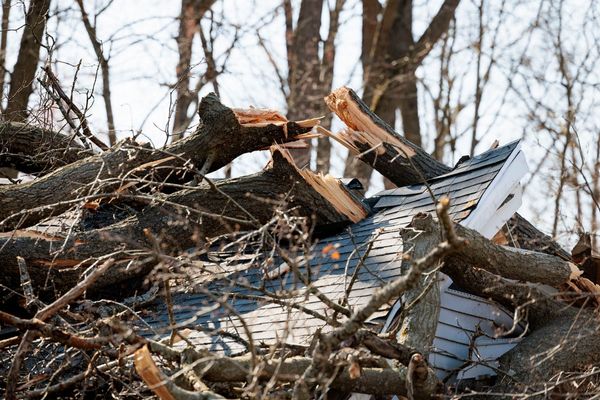
The build up or out discussion looks set to continue, with a community campaign under way to prevent a site west of Stromlo from development.
Attached to Denman Prospect, Bluetts Block is located on part of the ACT's western edge being scoped to meet Canberra's future housing needs.
Early impact work at the block has determined the existence of endangered box-gum woodlands, as well as several other species of significance.
Despite campaigning to have the block removed from future urban-area zoning, The Greens' Member for Kurrajong Rebecca Vassarotti said recently "evidence-based policy" would determine its future development.
Determined to prevent it, a group of Bluetts Block conservationists have facilitated bushwalks to Bluetts and shared images of its wildlife as part of a push to inform what they believe is at stake.

Member Dave Wong will run several photography and information sessions at the site, with a Bluetts Block exhibition at the workshop's culmination.
An ecologist, Dr Wong became interested in Bluetts during a PhD focusing on how agricultural disturbances impacted pink-tailed worm-lizards.
Dr Wong said Bluetts contained populations of the legless lizard, which was listed as vulnerable in the ACT in 2020.
His faith in developer-commissioned environmental impact reports was minimal and he feared prescribed burning would increase should people move into the bushfire-prone area.
"This is as another example of the kind of death by 1000 cuts type of planning that's happening," Dr Wong said.
"On the other hand, preserving a larger natural area provides a buffering effect against negative consequences of the urban interface, making the site more resilient."
While a new territory plan was currently being drafted, a target of 4000 additional homes has been set for the Molonglo Valley between 2021-26. The demand for new property across Canberra was evident last month, when more than 12,000 people registered for a 71-block Macnamara ballet.
Environment Minister, Ms Vassarotti, who also holds the Homelessness and Housing Services portfolio, said a lot of the land left to develop in Canberra was ecologically sensitive.
"Unlike others, I am not prepared to play politics with the environment and don't accept that we need to trade off housing affordability and environmental protection," Ms Vassarottti said.
"Good planning and design means we can achieve a balance."

Preliminary assessment studies have been completed at the 9800-hectare western edge, with bushfire risk, air quality and cultural significance forming part of the reviews.
A more comprehensive work on development capability has been slated for completion at the end of the year, with $477,000 allocated for assessment in 2021-22 and $230,000 in 2022-23.
ACT Planning Minister Mick Gentleman said the work would see preliminary planning commence, including identification of size, type and location of developments, conservation areas, bushfire threat and mitigation measures, as well as road and infrastructure connections.
Mr Gentleman said the western edge development was an important next step in providing housing choice, while keeping with the ACT government's 70-30 land release policy.
While about 70 per cent of the area was within the existing urban footprint, planning authorities acknowledged a desire for greenfields development, Mr Gentleman said.

"That is why we are undertaking that work," he said.
Environment, Heritage and Water Directorate executive group manager Ian Walker said Bluetts Block contained important woodlands and bird species, according to evidence from the community.
"It contains very significant endangered box-gum woodlands and also some orchids," Mr Walker said.
"Through our survey work, we have also picked up some antechinus and some common dunnarts, which are, despite the name common dunnarts, not that common across the ACT and Canberra Nature Park."
While an annual target of 4666 new homes was set across Gungahlin, the Molonglo Valley and Belconnen ending this financial year, with another 4666 next year, the ACT government was currently finalising its land release mid-year review.
READ ALSO:
Conservation Council ACT executive director Helen Oakey said it was crucial for Canberra to work out a way to live more sustainably within its existing urban footprint.
"The way forward should include building higher-density housing that takes up a smaller footprint per person, that has shared green space, that builds community and that is energy-efficient and liveable," Ms Oakey said.
"We can no longer aspire to the luxury of multiple living spaces and multiple bathrooms going forward - there just isn't going to be the space for everyone to have that, and nor is it an efficient or equitable way to live."
Ms Oakey said mammals, small woodland birds, insects, grasslands and woodlands, all need to be protected from the impacts of the urban sprawl overtaking these habitats.
"Australia is facing a biodiversity crisis," she said.
"Loss of habitat is a key driving force behind that."







